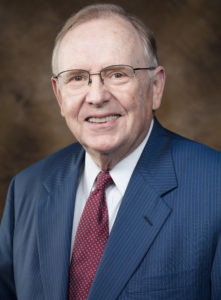 Although few leadership books focus on them, governing boards have a great influence on the leadership of organizations. Perhaps my view is influenced by my service on eight corporate boards of directors, eleven governing boards for professional organizations, seven advisory boards, and two administrative boards for churches.
Although few leadership books focus on them, governing boards have a great influence on the leadership of organizations. Perhaps my view is influenced by my service on eight corporate boards of directors, eleven governing boards for professional organizations, seven advisory boards, and two administrative boards for churches.
Six of the corporations were publicly traded; two (SysteCon and CAPS Logistics) were privately held. A co-founder of SysteCon, I served for seven years as its chairman until its acquisition by Coopers & Lybrand. For nine years, I served on CAPS Logistics’ board, a logistics software firm founded by two Georgia Tech colleagues.
My 14-year service on Russell’s board of directors culminated with its sale to Berkshire-Hathaway. My 12-year service on Logility’s board began with an IPO spin from American Software and ended with a reverse-spin. A founding director of Eastman Chemical Company following its spin from Eastman Kodak, my service on its board ended when I reached its 10-year term limit. My 16-year service on Motorola’s board ended with its separation into Motorola Solutions and Motorola Mobility; my 3-year service on the Motorola Solutions board ended because of age limits, as did my 18-year service on J. B. Hunt Transport’s board.
Too often, governing board members fail to step up to their responsibilities. Likewise, too often they take on responsibilities they shouldn’t take on; specifically, many fail to recognize the differences in their responsibilities and the responsibilities of people who are employed to administer the organization.
Although governing board members have responsibilities for a wide range of stakeholders, for nonprofit organizations and corporations their primary responsibility is the care and feeding of the Chief Executive Officer (CEO). Regarding the latter, their responsibilities go beyond selecting, supporting, developing, assessing, compensating, and replacing the CEO. Board members have a fiduciary responsibility to the owners of the organization, shareholders, or members of the professional organization. As such, they are also engaged in approving strategic plans and goals for the organization, performing succession planning, and ensuring risk assessments are being performed. Regarding risk assessments, governing board members have oversight responsibility for legal, financial, reputational, environmental, technological, operational, and political risks. The Walt Disney Company is a visible example of the latter.
Among Norman R. Augustine’s “laws” is Augustine’s 32nd Law: “One should expect that the expected can be prevented but that the unexpected should have been expected.”[i] Consider his example: “The developer of one particular aircraft engine, after suffering a series of highly destructive failures on a test stand due to foreign objects (bolts, washers, small tools) being inadvertently left inside test engines, dictated a procedure whereby prior to each run an inspector would physically enter the inlet of the engine and personally inspect for extraneous objects using a flashlight and thence certify in writing that no such objects were to be found. Only then would a test be initiated. As one should expect, however, it was only a short time until still another failure occurred. … this time due to the inspector’s flashlight having been left in the inlet.”
How do you anticipate what’ll go wrong? In addressing procurement challenges in the defense industry, Augustine noted, “Two types of uncertainty plague most major programs: known-unknowns and unknown-unknowns.” He provides an example of a known-unknown: the composition of the moon’s surface where the first Apollo lands; his example of an unknown-unknown is lightning striking Apollo XII just before its launch. While you might be able to make contingency plans for known-unknowns, you can only react when unknown-unknowns occur.
The global economic collapse of 2008 caught many governing boards by surprise. Although some claimed to have given warnings about the sub-prime mortgage debacle, for many, it was an example of a known-unknown. What about the COVID-19 virus outbreak in China that turned into a global pandemic? It impacted practically everyone in the world. Was it a known-unknown or an unknown-unknown? Decades before, extensive studies were performed, identifying things governments should do to prepare for a pandemic. On that basis, it seems to qualify as a known-unknown. However, based on responses of governments around the world, the impact of the COVID-19 pandemic has been not unlike that of an unknown-unknown.
[i] Norman R. Augustine, Augustine’s Laws and Major Systems Development Programs, revised & enlarged edition, American Institute of Aeronautics and Astronautics, New York, NY, 1983.